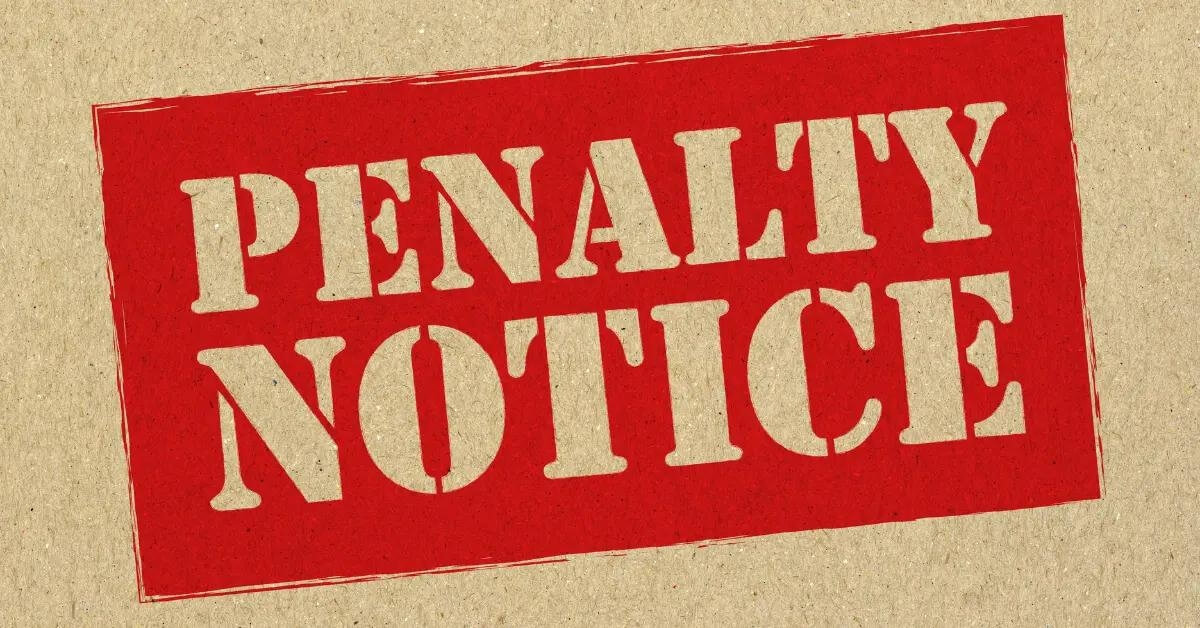Staring down a mountain of tax debt can feel like facing a brick wall with no ladder in sight. But here’s the kicker: Form 656-B might be your secret passage to a fresh start.
This form is your gateway to potentially settling for less than you owe through the IRS Offer in Compromise (OIC). It sounds promising, right?
Dive into this guide and discover how you could negotiate with the IRS over that daunting tax bill. You’ll learn about eligibility criteria—because not everyone gets the green light—and how exactly to dot every ‘i’ and cross every ‘t’ on your application.
Plus, we’re breaking down financial analysis essentials and offer amounts so that when it comes time to submit Form 656-b, you’re as prepared as they come. If taxes have been tying knots in your stomach, let’s unravel them together.
Understanding Form 656-B and the Offer in Compromise Process

Tackling tax debt can feel like facing a heavyweight champ, but IRS Form 656-B is your coach to help you negotiate a settlement. This form kicks off the Offer in Compromise (OIC) application, where you roll up your sleeves and show the IRS that paying your full tax bill would be an uppercut to your finances.
What is IRS Form 656?
Imagine having one shot at convincing the big guys that you need a break on what you owe. That’s where Form 656, part of the OIC package, comes into play. It’s for taxpayers who’ve hit a financial rough patch and acts as their written plea for mercy with Uncle Sam.
The stats don’t lie; less than 35% get approved according to those number crunchers in the 2024 IRS Data Book. But don’t let this knock down your spirit. If done right, this could be your golden ticket out of debt-ville.
The Role of an Offer in Compromise
An OIC isn’t just about settling debts—it’s about doing it without going broke or selling grandma’s heirlooms on eBay. By striking a deal through this compromise application process, eligible folks can reduce their overall tax liability dramatically—sometimes even pennies on the dollar.
This isn’t some hush-hush loophole either; it’s legit relief straight from the federal tax law playbook designed for cases when collecting all dues becomes mission impossible.
So buckle up because if navigating through taxes was ‘Taxopoly’, then submitting an offer might just be landing on Free Parking—with cash waiting for you. And remember: always consider bringing aboard a seasoned pro—a tax professional. They’ve been around these tracks before and know how to rev up your chances at success.
Key Takeaway:
Think of IRS Form 656-B as your cornerman in the tax ring, prepping you to land an Offer in Compromise and potentially save big on what you owe. This isn’t a shot in the dark; it’s a strategic move for those struggling financially, backed by Uncle Sam’s rules.
Don’t be discouraged by tough stats—your OIC could still score a win with the right approach. And hey, if tax forms were game pieces, nailing this one might just feel like hitting the jackpot at Free Parking.
Eligibility Criteria for Submitting Form 656-B
Imagine standing at the base of a mountain, that’s your tax debt. Now, picture a path leading up to an overlook where you can settle that debt for less than what you owe. That path is paved with IRS Form 656-B—but not everyone gets to hike it.
Meeting Low-Income Certification Guidelines
If your bank account isn’t exactly bursting at the seams, there might be some good news. The IRS has this nifty thing called low-income certification which could waive your application fee when filing an Offer in Compromise (OIC). To get this perk, your income needs to shimmy under certain thresholds—kind of like limbo dancing with financial numbers.
The fee waiver is one part of making sure the OIC program isn’t just for those rolling in dough but also helps folks who are watching their pennies. Check out Form 656-B instructions, and they’ll tell you if you’re playing in the right ballpark financially or if it’s back to drawing board time.
Filing requirements aren’t as tough as trying to explain quantum physics; however, they do need careful attention. For starters, ensure all individual tax periods are accounted for because missing even one can make things go sideways faster than a pancake flip gone wrong.
Your social security number will act like a backstage pass—it’s how the IRS knows who’s submitting form 656-B so don’t leave home without it…figuratively speaking since we’re talking paperwork here.
Last tidbit: If you’ve got any doubts about whether Uncle Sam considers what you owe ‘doubtful collectability’ or if special circumstances apply—that could be your golden ticket. But remember these cases aren’t everyday occurrences; think more ‘finding money in old jeans’ kind-of-rare.
Key Takeaway:
Feeling overwhelmed by tax debt? Form 656-B might be your lifeline if you meet the criteria, like fitting under income thresholds for a fee waiver. Make sure every tax period is in check and have your social security number ready. Special circumstances may just tip the scales in your favor.
Step-by-Step Instructions for Completing Form 656-B
Picture this: You’re about to tackle the IRS Form 656-B, ready to make an offer they can’t refuse. But before you start dreaming of your tax troubles disappearing, let’s walk through how to nail it on the first try.
- Start with Personal Information
- Provide your name, address, and Social Security number.
- If married and filing jointly, include your spouse’s details.
- This section is for those filing a 1040 tax return.
- Detail Your Tax Information
- List the tax periods and amounts owed with precision and clarity.
- Include Individual Tax Periods and, if applicable, complete the Low-Income Certification to potentially waive the $205 filing fee.
- Choose Your Payment Offer
- Form 656-B offers options for lump sum cash or periodic payments.
- Select the payment method that aligns with your financial situation.
- Address Doubts About Liability or Tax Administration
- In section two, explain why full payment is not feasible, due to special circumstances or other valid reasons.
- Support your explanation with appropriate documentation.
- Business Information (If Applicable)
- Complete this section if you have a business entity like a corporation, partnership, LLC, or LLP.
- Provide similar information as in the personal section.
- Payment Terms and Calculations
- Indicate your total offer, payment method, and initial payment.
- For Lump Sum Cash, pay 20% of your total offer upfront. For Periodic Payments, make the first payment with your offer and pay the remainder within 6 to 24 months.
- Continue payments during IRS review, unless you qualify for Low-Income Certification.
- Use separate checks for better tracking if preferred, ensuring each check matches the corresponding section of the form.
- Calculate your offer realistically, considering your future earning potential. Use Form 433-A (OIC) for individual finances or 433-B (OIC) for business finances.
- Stay Current with Taxes
- Address any outstanding current taxes.
- Ensure future estimated tax payments are made on time.
- Designation of Payment, EFTPS, and Deposit (Optional)
- Specify if your payment is for a specific tax year or make a deposit.
- Understand that payments are generally non-refundable, except for deposits if the IRS rejects your offer.
- Source of Funds and Payment Instructions
- Indicate the source of your funding (e.g., loans, borrowing, selling assets).
- Use checks for payments, not cash.
- Offer Terms
- Read and understand the terms of the offer. No input is required here, but comprehension is essential.
- Signatures
- Sign the form under penalty of perjury.
- Joint filers must have both spouses’ signatures.
- Paid Preparer Use Only
- This section is for a professional tax preparer to complete.
Remember, when filling out Form 656-B, clarity and accuracy are crucial. Ensure all information is well-supported and realistic. Take each section step by step for a successful Offer in Compromise with the IRS.
Financial Analysis for Your Offer in Compromise Proposal
Your ticket to potentially settling tax debts for less than you owe hinges on presenting a rock-solid financial situation. Think of Forms 433-A (OIC) and 433-B (OIC) as your stage to spotlight your finances with IRS-style x-ray vision. Form 433-A (OIC), for individuals, and Form 433-B (OIC), for businesses, are the critical scripts that narrate your economic tale.
Nailing Down Your Reasonable Collection Potential
Digging into these forms is like preparing a meal; every ingredient must be measured precisely—no eyeballing allowed. Begin by dissecting income versus expenditures, and assets against liabilities—it’s all about proving what’s called ‘Reasonable Collection Potential’ or RCP. The IRS uses this figure to gauge whether they’re squeezing an orange expecting apple juice.
Gathering documentation required becomes the backbone of this financial feast—and trust me; the IRS has quite the appetite for details. Be prepared with bank statements, bills, pay stubs—you name it—if it counts pennies or predicts future earnings, bring it to the table.
Striking Balance: Assets Versus Debts and Living Expenses
The balancing act here could rival any high-wire performance because getting that equilibrium right between living expenses and debt can mean curtains up or down on your offer acceptance chances. Underestimating living costs might paint too rosy a picture while overstating them could set off alarm bells—accuracy is king.
Calculating Your Offer Amount and Payment Options
Making an offer to the IRS isn’t like haggling at a yard sale. It’s about presenting a number that fits your financial reality while also passing muster with the tax administration’s guidelines. But how do you hit that sweet spot? Well, it starts with understanding your options.
Choosing Between Lump Sum Cash or Periodic Payment Offers
A lump sum cash offer means you’re proposing to pay off your debt in five or fewer installments within five months after the IRS accepts your offer. Think of it as ripping off the band-aid – quick but might sting financially if not prepared for this sprint-style payoff.
Periodic payment offers are more like a marathon; they allow payments over six to 24 months, giving you room to breathe and balance other expenses. Whichever route you choose will affect the calculation of your total offer amount because Uncle Sam likes his money sooner rather than later when possible.
To figure out which option floats your boat, consider using tools such as the Offer in Compromise Pre-Qualifier tool. This can help gauge whether you should send cash all at once or spread it out over time without having to crunch numbers until smoke comes from behind those earlobes.
Documenting Special Circumstances for Tax Relief
When life throws you a curveball, the IRS’s Offer in Compromise (OIC) program might be your ticket to settling tax debts. But getting an Offer in Compromise approved is no walk in the park—especially when it comes to proving exceptional circumstances or arguing effective tax administration claims on Form 656-B.
Defining Exceptional Circumstances
The term ‘exceptional circumstances’ may sound like legal jargon, but think of it as the IRS’s way of acknowledging that sometimes stuff happens that’s beyond our control. If paying off your full tax debt would create an unfair economic hardship, then detailing these special situations can bolster your case for relief.
You’ll want to gather every scrap of supporting documentation that paints a clear picture of how fulfilling those payment requirements could leave you high and dry. Whether it’s unexpected medical bills or natural disasters impacting your ability to make ends meet, this paperwork becomes crucial evidence in advocating for your cause.
Navigating Effective Tax Administration Claims
Sometimes making all those federal tax payments isn’t just tough—it might seem downright unreasonable given certain factors affecting you personally. This is where claiming effective tax administration comes into play; if enforcing collection wouldn’t be fair considering everything else going on in your life, spell it out clearly and concisely on Form 656-B.
Apart from presenting a compelling narrative about why regular payment terms are impractical or inequitable for you specifically—say hello also to some hard numbers showing what you can realistically pay without flipping your world upside down.
Packing Your Application with Punch
To make sure they get the message loud and clear: don’t simply tell them—you have got to show them. Use bank statements, medical records, letters from employers… anything concrete helps build up a fortress around your claim so sturdy even skeptical IRS reviewers would nod approvingly at its strength.
Key Takeaway:
When life hits hard, IRS Form 656-B could be your lifeline for tax relief. Show the IRS why paying in full is too much—stack up solid proof like medical bills or disaster impacts to strengthen your case.
If it feels unfair to pay up due to personal hardships, make a strong play on Form 656-B. Tell them and show them with numbers and documents why their terms just won’t fly with your reality.
Submission Process and Application Fees for Form 656
You’ve crunched the numbers, sweated over paperwork, and now you’re ready to tackle your tax burden head-on with an Offer in Compromise (OIC). But before you break out into a victory dance, there’s just one more hurdle: submitting Form 656 along with its application fee. Here’s how you can send off that package without a hitch.
Where to Send Your Completed OIC Package
The IRS isn’t shy about where they want their mail; it all depends on where you hang your hat. You’ll need to check the Electronic Federal Tax Payment System for specific mailing addresses based on your location—because let’s face it, nobody wants their financial fresh start delayed by ending up in the wrong stack of mail at the IRS office.
If sending stacks of paper through snail mail feels like last century’s game plan, remember this—the Electronic Federal Tax Payment System is here as a modern marvel for those who prefer clicks over licks (of stamps). So get comfy with technology if paper forms aren’t quite your style.
Tackling The Application Fee Like A Pro
No one loves parting ways with money but think of this fee as an investment towards peace of mind. When submitting form 656-B don’t forget about including that non-refundable application fee unless low-income certification guidelines put some cash back into your pocket—a small silver lining.
Your offer amount includes two flavors: lump sum cash or periodic payment options. If choosing lump sum cash—you guessed it—you’ll make an initial payment alongside that application fee using separate checks because mixing payments would be like blending stripes and polka dots—it just doesn’t work well together.
For periodic payments? Make sure each installment arrives timely because missed tax periods are like missing puzzle pieces—they spoil the big picture which is getting right with Uncle Sam.
Key Takeaway:
Ready to settle your tax debt? Make sure you send Form 656 with the right fee to the correct IRS address. Check where online and remember, low-income folks might skip the fee.
Choose lump sum or installment payments for your offer, but keep them separate from fees. On-time payments are key.
Post-Submission Steps After Filing an Offer in Compromise
You’ve crossed the T’s, dotted the I’s, and sent off your Offer in Compromise (OIC). Now what? Well, first things first: pat yourself on the back for tackling those missed tax periods head-on.
But hold off on popping that champagne bottle just yet; there are a few more steps to navigate.
The Waiting Game Begins
The IRS isn’t known for lightning-fast responses, so prepare for some waiting. Once they receive your OIC—assuming you nailed that smooth submission—they’ll send an acknowledgment letter. Keep this document safe; it’s proof of your proactive approach toward resolving your tax issues.
While you wait, keep up with any current tax obligations. Falling behind now could throw a wrench into things if you aim to get out from under past debts while staying square with Uncle Sam moving forward.
Possible Outcomes Explored
If Lady Luck smiles upon you and the IRS accepts your offer—celebration time. You’ll have terms to fulfill per their acceptance letter but breathe easy knowing there’s light at the end of this taxing tunnel.
But life throws curveballs and sometimes even well-crafted offers face rejection. If yours is among them—and let’s be real here because the odds aren’t always in our favor, don’t despair just yet.
You can appeal within 30 days using Form 13711—the Request for Appeal of Offer in Compromise—a handy little form when you feel like the decision was off base or circumstances were overlooked.
Moving Forward Regardless of Outcome
No matter which way the coin lands—heads or tails—you’ve got options post-OIC filing:
- If accepted: Stick closely to payment requirements laid out by our friends at the Electronic Federal Tax Payment System (EFTPS).
- If rejected: Consider setting up an installment agreement as a backup plan—it won’t be as sweet as an OIC deal but will still put those IRS hounds back on their leashes.
Key Takeaway:
After filing your Offer in Compromise, brace for a wait and keep paying current taxes. If accepted, follow the IRS’s payment terms; if rejected, appeal with Form 13711 or set up an installment plan.
Avoiding Common Mistakes When Applying for an OIC
Ever feel like you’re navigating a maze blindfolded? That’s what applying for an Offer in Compromise (OIC) can feel like. But fear not. With some savvy moves, you can dodge the pitfalls that trip up many taxpayers.
The IRS Form 656 is your ticket to potentially settling tax debts for less than you owe. Sounds great, right?
But here’s the catch: about two-thirds of these compromise applications don’t make it through. Don’t be part of that statistic.
First off, make sure all your tax returns are filed; missing even one could sink your ship before it sails. And when filling out Form 656-B, accuracy is key—double-check those Social Security numbers and ensure every decimal point is on point.
Finessing Your Financials
Digging into the details matters most when disclosing finances on Forms 433-A (OIC) or 433-B (OIC). An honest picture of your assets and income sets a strong foundation for your offer amount—which should be realistic yet reflect hardship if applicable.
Pick between lump sum cash or periodic payments wisely; this isn’t just eeny-meeny-miny-moe. The initial payment goes hand-in-hand with submitting form 656 so think carefully about whether upfront or installment-based works best considering both current financial constraints and future earning potential.
Crafting A Clear Case For Compromise
If exceptional circumstances have thrown you a curveball—a job loss, medical issues—you’ll need more than just a sad story to sway the IRS. Attach supporting documentation proving why typical collection actions might leave you high and dry financially speaking.
Sending It Off Successfully
- Gather all forms including any required estimated tax payments,
- Tally up total offers,
- Select doubt as to collectibility if paying would mean eating ramen noodles indefinitely,
Then send everything via certified mail—don’t trust snail mail without proof.
So remember: Keep calm and file correctly—and may smoother sailing lie ahead in your OIC journey.
Key Takeaway:
Dodge common OIC mistakes by ensuring all tax returns are filed and double-checking your Form 656-B details. Present a truthful financial picture, choose the right payment plan, and back up your case with solid evidence. Finally, send your forms by certified mail for peace of mind.
Professional Assistance with Your Offer in Compromise Application
Navigating the complexities of the IRS, especially when filing an Offer in Compromise, can often feel as daunting as trying to hit a moving target in a storm. This is where the expertise of Silver Tax Group becomes invaluable for handling your Form 656-B. With their seasoned experience in tax negotiation, Silver Tax Group professionals know the intricacies of this process, ensuring you avoid common pitfalls that could derail your efforts.
Considering the various payment options for settling your tax debt can be overwhelming. Whether it’s a lump sum cash offer or periodic payments, Silver Tax Group’s experts will meticulously analyze your financial situation, helping you choose the most advantageous path. Their guidance is crucial in determining whether to make separate payments or avoid unnecessary cash disbursements.
In cases where you need to present exceptional circumstances or argue for effective tax administration claims, Silver Tax Group’s skill in crafting a compelling narrative and gathering robust documentation is unmatched. They ensure that every aspect of your compromise form is precise and persuasive, eliminating any uncertainties that might arise from incomplete or weak submissions.
Moreover, Silver Tax Group’s proficiency isn’t limited to just preparing and submitting Form 656. They are adept at navigating the intricacies of electronic federal systems like EFTPS (Electronic Federal Tax Payment System), crucial for handling current tax obligations and avoiding disruptions from past tax issues.
Their expertise is particularly beneficial when it comes to making required estimated payments as part of a streamlined installment agreement after your Offer in Compromise is accepted, ensuring compliance and avoiding potential IRS rejections.
Silver Tax Group stands out as the best choice for professional guidance and support in the complex world of IRS negotiations, ensuring your Offer in Compromise is handled with the highest level of expertise and care.
Key Takeaway:
Don’t tackle IRS Form 656-B solo; tax pros like Silver Tax Group know the ropes and can help you choose the right payment plan, back your claims with solid proof, and navigate tricky systems like EFTPS.
File an Offer In Compromise with Silver Tax Group
So, you’ve tackled the tough stuff. You know that form 656-B is your ticket to negotiating tax debt with the IRS through an Offer in Compromise. We covered eligibility must-haves and walked you through filling out those nine sections without a hitch.
Remember this: crunching numbers for your offer amount isn’t guesswork—it’s about what you can realistically pay. Whether it’s lump sum cash or periodic payments, picking the right plan matters.
Talked about special circumstances? Check. Submission details and fees?
Double-check. And after sending off that OIC package, stay sharp—you’ll need to be ready for whatever comes next.
Getting professional help could smooth things over if you’re stuck at any point—just something to keep in mind as you forge ahead on your path toward settling up with Uncle Sam.
Ready to let Silver Tax Group help you file your Offer in Compromise? Reach out today!








